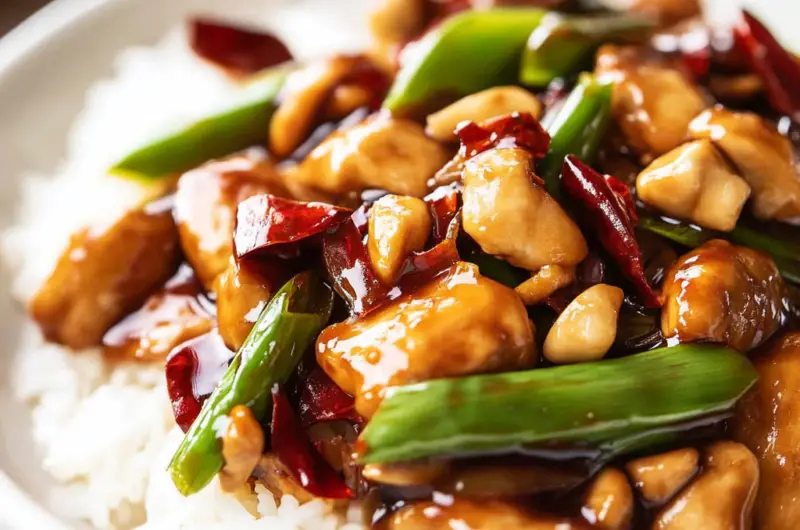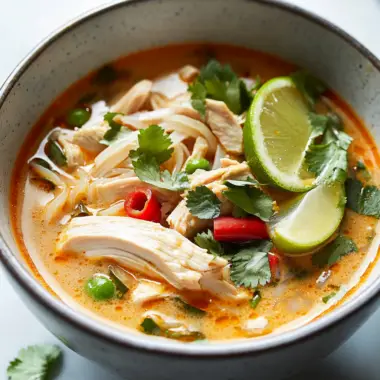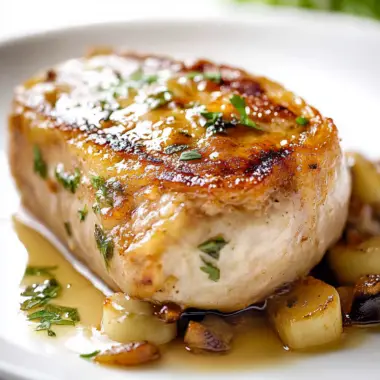Kung Pao Chicken is a beloved dish known for its bold flavors and delightful crunch. Originating from the Sichuan province of China, this dish features tender chicken pieces stir-fried with vibrant vegetables, roasted peanuts, and a spicy sauce. The combination of sweet, savory, and spicy notes makes it irresistible. In just a matter of minutes, you can whip up this classic dish in your own kitchen. It’s perfect for busy weeknights when you want something fast yet delicious. Plus, it’s a fantastic way to impress family or guests without spending hours in the kitchen. Whether served over rice or enjoyed on its own, this kung pao chicken recipe will surely become a staple in your home. With its rich flavor profile and satisfying crunch from the peanuts, this dish is not only filling but also incredibly versatile. You can easily adjust the spice levels to suit your taste or incorporate additional vegetables for an extra boost of nutrition. So grab your wok or skillet and let’s dive into making this scrumptious kung pao chicken!
Why You’ll Love This kung pao chicken
- Quick and Easy: With minimal prep time and straightforward steps, even novice cooks can create this delightful dish without stress
- Flavorful and Versatile: The combination of ingredients delivers outstanding flavor. You can easily customize it by adding your favorite ingredients or adjusting the spices to suit your palate
- Healthy Ingredients: Packed with lean protein from the chicken and essential nutrients from fresh vegetables like bell peppers and scallions, this dish is as nutritious as it is tasty
- Perfect for Meal Prep: Kung Pao Chicken keeps well in the fridge and makes an excellent choice for meal prepping. Enjoy it throughout the week for quick lunches or dinners

Ingredients for kung pao chicken
Here’s what you’ll need to make this delicious dish:
- Boneless, Skinless Chicken Breasts: About 3-4 breasts are ideal; they cook quickly and stay juicy in the stir-fry.
- Bell Peppers: Use one red and one green bell pepper for color and sweetness; they add great texture to the dish.
- Green Onions: Fresh green onions provide a mild onion flavor; chop them finely to sprinkle on top before serving.
- Roasted Peanuts: These add crunchiness; choose unsalted peanuts for better control over saltiness.
- Garlic: Fresh garlic cloves enhance flavor; always opt for firm cloves for the best taste.
- Soy Sauce: Low-sodium soy sauce helps manage salt levels while still providing that umami punch.
- Sichuan Peppercorns: These give an authentic numbing heat; adjust based on your spice tolerance.
- Rice Vinegar: Adds tanginess to balance out flavors; use it sparingly if you prefer milder acidity.
The full ingredients list, including measurements, is provided in the recipe card directly below.
How to Make kung pao chicken
Follow these simple steps to prepare this delicious dish:
Step 1: Prepare Your Ingredients
Begin by cutting the boneless skinless chicken breasts into bite-sized pieces. Chop the bell peppers into similar-sized chunks and slice the green onions.
Step 2: Marinate Chicken
In a bowl, combine soy sauce with minced garlic and Sichuan peppercorns. Add the chicken pieces to marinate for at least 15 minutes while you prepare other ingredients.
Step 3: Heat Your Wok
Place a large wok or skillet over medium-high heat. Once hot, add a tablespoon of oil suitable for high temperatures like vegetable or peanut oil.
Step 4: Stir-Fry Chicken
Add the marinated chicken to the hot wok in a single layer. Cook until browned on all sides and cooked through—about 5-7 minutes—then remove it from the pan.
Step 5: Sauté Vegetables
In the same pan, toss in more oil if needed, then add bell peppers. Stir-fry them until they are tender-crisp before adding back in the cooked chicken.
Step 6: Combine Everything
Pour in rice vinegar along with additional soy sauce if desired. Toss everything together until well-combined. Finally, fold in roasted peanuts just before serving.
Transfer to plates and drizzle with sauce for the perfect finishing touch.

Tips and Tricks for kung pao chicken:
Here are some helpful tips to ensure the best results for your dish:
- Even Cooking: Make sure all ingredients are cut to similar sizes for consistent cooking times.
- Temperature Control: Let ingredients reach room temperature before starting for better results.
- Avoid Overcrowding: Cook in batches if necessary; overcrowding can lead to steaming rather than frying
- Add Spice Gradually: If you’re unsure about spice levels, start with less Sichuan peppercorns then increase as desired.
Enjoy creating this delectable kung pao chicken!
From prep to plate: Try these meals
How to Serve kung pao chicken
This kung pao chicken is versatile and pairs wonderfully with:
Rice or Potatoes: A hearty base that soaks up the delicious sauce.
Fresh Salad: Adds a crisp and refreshing contrast to the rich flavors of the dish.
Crusty Bread: Perfect for enjoying every last drop of the flavorful sauce.
Noodles: A delightful pairing that complements the savory and spicy notes of the chicken.
Steamed Vegetables: Light and nutritious, they balance the richness of the kung pao chicken.
Feel free to pair it with your favorite sides for a personalized meal!

Warm up with these cozy dishes
Make Ahead and Storage
- Make Ahead: You can prep your kung pao chicken in advance by marinating the chicken for at least 30 minutes before cooking. Chop vegetables ahead of time and store them in airtight containers in the fridge for up to two days.
- Storing: Leftovers should be stored in an airtight container in the refrigerator for up to three days. For longer storage, consider freezing portions in freezer-safe containers for up to three months.
- Reheating: To reheat, thaw frozen kung pao chicken in the fridge overnight. Heat gently on the stove over medium heat until warmed through, about 5-7 minutes, stirring occasionally. Add a splash of water or broth if needed to maintain moisture.
Make your next meal unforgettable
Suggestions for kung pao chicken:
Avoiding Overcooking the Chicken
When making kung pao chicken, one common mistake is overcooking the chicken. Overcooked chicken can become dry and tough, which detracts from the dish’s overall flavor and texture. To prevent this, ensure that you cut the chicken into uniform pieces for even cooking. Start by marinating the chicken in a mixture of soy sauce, rice vinegar, and cornstarch for about 20 minutes. This not only adds flavor but also helps to retain moisture during cooking. Use high heat in a wok or skillet to cook the chicken quickly, stirring frequently until it turns golden brown and is no longer pink in the center. Keep an eye on the cooking time; usually, 5 to 7 minutes is sufficient. By mastering this technique, you’ll ensure juicy, tender chicken that enhances your kung pao dish.
Ignoring Fresh Ingredients
Another mistake to avoid when preparing kung pao chicken is neglecting fresh ingredients. Fresh vegetables and aromatics significantly elevate the dish’s taste and nutritional value. Always opt for fresh bell peppers, scallions, and garlic instead of canned or frozen alternatives. Fresh ingredients provide vibrant flavors and textures that truly define authentic kung pao chicken. When shopping for vegetables, check for firmness and vibrant colors, as these are indicators of freshness. Additionally, consider using raw peanuts instead of pre-roasted ones; they offer a crunchier texture when cooked properly. Ensure your ginger is firm and fragrant to add depth to the flavor profile. By prioritizing fresh ingredients, you will create a more delicious and satisfying meal.
Skipping Proper Marination
Marination is crucial when making kung pao chicken, yet many home cooks skip this step entirely or do not marinate long enough. Marinating allows flavors to penetrate the meat while tenderizing it at the same time. A good marinade typically includes soy sauce, rice wine vinegar, sesame oil, and cornstarch. Aim for at least 20 to 30 minutes of marination time; however, if you have extra time, letting it sit in the refrigerator for several hours can enhance flavors even more. This process not only infuses your chicken with bold flavors but also improves its texture by breaking down proteins in the meat. Take this extra step seriously; it will significantly impact your final dish.
Using Too Much Sauce
In kung pao chicken preparation, it’s easy to fall into the trap of using too much sauce. While a flavorful sauce is essential for this dish, an excess can lead to a soggy texture that overwhelms other ingredients. The key is balance: aim for just enough sauce to coat all components lightly without drowning them. Start by preparing your sauce separately—commonly made from soy sauce, sugar, vinegar, and hoisin sauce—and gradually add it during cooking while tossing all ingredients together. Monitor how much sauce you’re adding to ensure it complements rather than dominates the dish’s overall character. Remember that less is often more when it comes to sauces in stir-fried dishes like kung pao chicken.

Simple dishes with extraordinary flavor
FAQs for kung pao chicken:
What are the main ingredients in kung pao chicken?
Kung pao chicken features several key ingredients that contribute to its unique flavor profile. The primary component is diced chicken breast or thigh meat marinated in soy sauce and cornstarch for tenderness and flavor enhancement. Other essential ingredients include peanuts or cashews for crunchiness and bell peppers for added color and nutrition. Aromatics such as garlic and ginger elevate the dish’s taste profile further while dried red chilies provide a spicy kick characteristic of traditional kung pao recipes. Finally, a savory sauce made from soy sauce, rice vinegar, sugar, and hoisin creates a deliciously balanced coating that ties all these components together beautifully.
Can I customize my kung pao chicken recipe?
Absolutely! One of the best aspects of kung pao chicken is its versatility in customization according to personal preferences or dietary restrictions. You can easily substitute proteins like tofu or shrimp if you’re looking for vegetarian or seafood options while keeping the same flavorful elements intact. Additionally, adjusting spice levels by changing the number of dried chilies used allows you control over heat levels in your dish—perfect for those who prefer milder flavors! You can also experiment with different vegetables like broccoli or snap peas based on seasonal availability or taste preferences while maintaining that classic kung pao essence.
Is kung pao chicken gluten-free?
Kung Pao Chicken can be made gluten-free with some simple substitutions in its key ingredients. Traditional soy sauce contains gluten; however, gluten-free tamari serves as an excellent alternative that retains similar taste qualities without compromising authenticity in your dish’s flavor profile. To thicken sauces without using wheat-based cornstarch blends commonly found in regular recipes—opt for pure cornstarch instead—it’s naturally gluten-free! Always check labels when purchasing packaged items like hoisin sauce or pre-made marinades since some brands may contain hidden gluten sources! With these considerations taken into account—you can enjoy delicious gluten-free Kung Pao Chicken without worry!
How should I serve kung pao chicken?
Serving Kung Pao Chicken properly enhances both presentation and enjoyment of this flavorful dish! It pairs beautifully with steamed jasmine rice or fried rice as a base—allowing diners to savor every drop of that delectable sauce alongside tender bites of meat & veggies alike! For an authentic touch sprinkle chopped green onions over top before serving along with additional crushed peanuts if desired—a perfect garnish elevating its visual appeal too! You might also consider offering side dishes such as stir-fried bok choy or sautéed snow peas which complement each other well nutritionally while providing variety on your dinner plate!
Conclusion for kung pao chicken:
In conclusion, mastering kung pao chicken requires attention to detail regarding cooking techniques and ingredient selection. Avoid common mistakes such as overcooking the protein or neglecting fresh produce; these choices profoundly impact taste and texture quality within your finished meal! Don’t forget about proper marination time either—it plays a vital role in ensuring each bite bursts with flavor while enhancing tenderness throughout each piece of meat used! Remember balance regarding sauces too—too much can ruin this delicacy entirely! By following these tips closely along with our FAQs addressing common concerns along preparation methods—you’ll find yourself confidently serving up delicious homemade Kung Pao Chicken everyone will love!
Print
Easy Kung Pao Chicken Recipe
- Total Time: 30 minutes
- Yield: 4 servings
Description
Experience the bold, mouthwatering flavors of this classic Kung Pao Chicken recipe, perfect for a quick weeknight dinner. Tender chicken pieces stir-fried with colorful bell peppers, crunchy roasted peanuts, and a spicy, savory sauce create a delightful meal that’s both satisfying and nutritious. In just under 30 minutes, you can have this restaurant-quality dish on your table, impressing family and friends alike. Customize the spice level to suit your palate and enjoy this versatile dish over rice or noodles for a complete meal.
Ingredients
Boneless, skinless chicken breasts
Bell peppers (red and green)
Green onions
Roasted peanuts
Garlic
Low-sodium soy sauce
Sichuan peppercorns
Rice vinegar
Instructions
1. Cut chicken into bite-sized pieces and chop bell peppers and green onions.
2. Marinate chicken in soy sauce mixed with minced garlic and Sichuan peppercorns for at least 15 minutes.
3. Heat oil in a wok or skillet over medium-high heat; stir-fry marinated chicken until browned (5-7 minutes). Remove from pan.
4. Sauté bell peppers until tender-crisp; return chicken to the pan.
5. Add rice vinegar and soy sauce; toss everything together with roasted peanuts before serving.
Notes
Adjust spice levels by varying the amount of Sichuan peppercorns.
Feel free to add vegetables like broccoli or snap peas for extra nutrition.
- Prep Time: 15 minutes
- Cook Time: 15 minutes
Nutrition
- Calories: 350
- Fat: 16g
- Carbohydrates: 18g
- Protein: 32g








